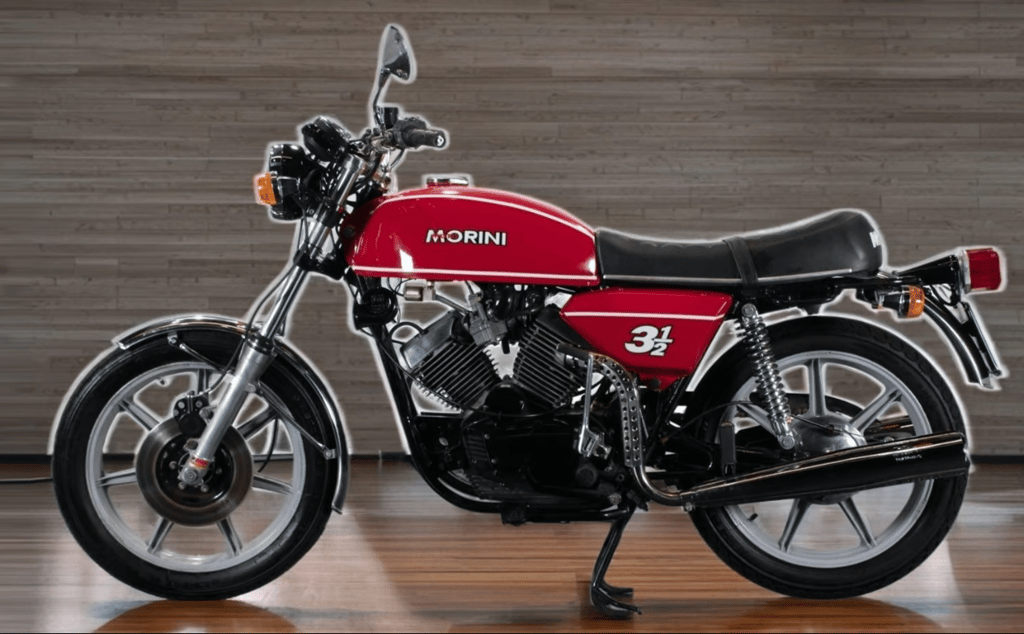From Resilience to Revival: The Unfolding Story of Moto Morini
The article tells the story of Moto Morini, an Italian motorcycle brand that has a rich history and is known for its resilience, innovation, and passion. It traces the origins of Moto Morini, from its beginnings as a workshop in Bologna to its rise in the motorcycle sector after World War II. The article also highlights the transition of the company to Morini Franco Motori and its success in engine manufacturing for mopeds and scooters. Moto Morini's racing successes and commercial ventures are discussed, including its renowned 250cc Grand Prix motorcycle and the introduction of V-twin powered motorcycles in the 1970s. The article concludes by noting the brand's revival in the modern era and its commitment to marrying tradition with modern innovation.
ITALY MOTO MORINIFOUR STROKE1940'SMOTORCYCLES
2/23/20243 min read


From Resilience to Revival: The Unfolding Story of Moto Morini
Introduction
Moto Morini stands as a hallmark of Italian motorcycling, a brand etched with history, performance, and a spirit of entrepreneurship. Beginning in the heart of Bologna, this company rose from humble origins to become a touchstone for motorbike aficionados worldwide, cherished for both its mechanical prowess and its role in the chronicles of two-wheeled racing.
The Origins and History of Moto Morini
In 1937, in a small workshop tucked away on Via Malvasia in Bologna, Alfonso Morini embarked on a venture that would reshape the Italian motorcycling landscape. Over a decade's worth of expertise gained alongside Mario Mazzetti laid the groundwork for Moto Morini, a name destined to become synonymous with Italian craftsmanship and engineering excellence. Initial production focused on utilitarian three-wheelers, responding to the demand of a war-torn nation yearning for affordable transportation. Despite the devastation of World War II, Alfonso's resilience saw the company swiftly resume operations, this time with an eye on motorcycles. The post-war era witnessed the launch of the 125cc motorbike — a machine that signaled Moto Morini's shift towards two-wheeled innovation and which would spearhead its rise in the motorcycle sector.
Transition to Morini Franco Motori and Mopeds
The saga of Moto Morini took a pivotal turn when Franco Morini, Alfonso Morini's nephew, parted ways with his business partner Vittorio Minarelli in 1954. This split gave rise to two distinct paths: Minarelli went on to establish his eponymous company, while Morini founded Morini Franco Motori S.p.A., setting the stage for innovation in engines for light motorcycles, mopeds, and scooters. Nestled in the industrious city of Bologna, the new company soon made a name for itself with its ingenious 50cc air- and liquid-cooled two-stroke engines, and in time, expanded its repertoire with air-cooled 125cc four-stroke engines. The engines crafted by Morini Franco Motori became the heartbeat of countless European mopeds, weaving the Morini name into the fabric of scooter and light motorcycle engineering.
Moto Morini Scooters
While the specifics of Moto Morini's interlude with scooter production are relatively obscure, the legacy of the brand in the realm of scooters has been intertwined with its proficiency in engine manufacturing. Morini Franco Motori, as the entity responsible for designing and building engines, produced power units that found their way into the frameworks of scooters and light motorcycles across Europe. The expertise of Morini engines in two-wheeled vehicles transcended mere displacement or cooling technologies; it was a testament to the innovation that could elevate a simple mode of transportation into an object of passion, powering the scooters that would zip through the winding streets of Italy and beyond.
Moto Morini's Racing Success and Commercial Ventures
Moto Morini's journey is punctuated by a series of racing triumphs and innovative road bikes that carved out a unique niche in motorcycling history. The brand fostered a reputation for upstaging the competition with singularly impressive machines, such as the world-renowned 250cc Grand Prix motorcycle. This marvel of engineering, capable of an astonishing 12,000 rpm, powered Tarquinio Provini to the brink of world championship glory in 1963. On the commercial front, bikes like the Rebello, Settebello, and Corsaro endeared themselves to an eager market with their reliable performance and stylish Italian design. The Morini badge was also the starting point for the legendary Giacomo Agostini, who snagged the Italian 250cc title on a Morini before his illustrious career with MV Agusta. Even after Alfonso Morini's passing in 1969, the company sustained its momentum by diversifying its offerings with the introduction of the V-twin powered motorcycles in the 1970s, cultivating a broader appeal and securing the brand's place in biker folklore.
The Modern Era and Revival
In the twilight of the first decade of the new millennium, Moto Morini faced a daunting challenge as it slipped into liquidation. However, the storied marque wasn't destined to fade away; it was poised for a remarkable resurgence. By 2012, production hummed to life once more under new ownership, heralding a rebirth for the brand. Moto Morini's contemporary lineup marries the fierce independence and tradition of its past with modern innovation. Enthusiasts can choose from a range of models that evoke the brand's racing heritage and craftsmanship, from the adventure-ready X-Cape to the muscular Milano, all while exploiting modern advancements in technology and design.
Conclusion
From its inception to its current revival, Moto Morini's legacy is more than a tale of two wheels—it's a story of resilience, innovation, and passion that has enriched motorcycle culture globally. The company's unwavering commitment to performance and style has made it an enduring emblem of the Italian motorcycling spirit. As Moto Morini continues to evolve, it carries forward a tradition of excellence, inspiring new generations to embrace the joy and freedom of the open road.
